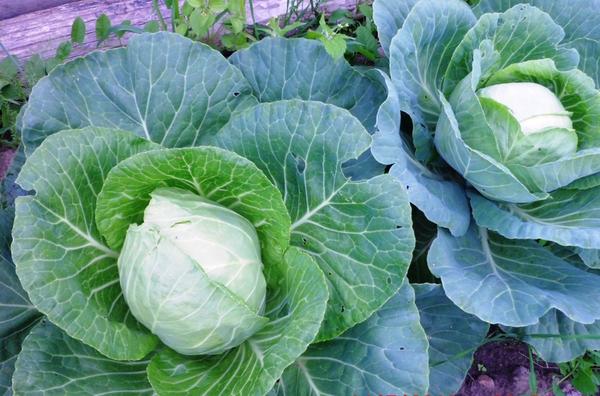Culture is considered one of the most popular among gardeners vegetable. There are a great number of varieties known; they are distinguished by maturity, appearance and taste characteristics. AND should be able to pick the right varieties, taking the benchmark for maturation, the degree of keeping quality, quality, suitability for salting in the winter. This review will discuss one of the late ripening cabbage varieties Winterovka, the description and characteristics of which are presented below.
Table of contents
Description and characteristics of cabbage variety Wintering
This vegetable is derived by the All-Union Scientific Research Institute for Breeding and Seed Production through individual and mass sampling from samples of foreign origin. In 1963, the variety was zoned.
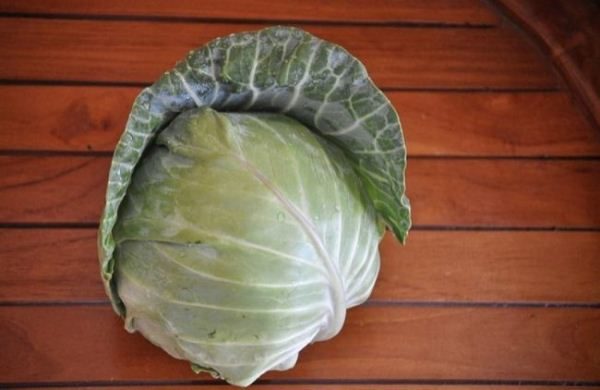
The variety is late ripening, full maturity is achieved four months after planting the seedlings. The size of the heading from seventy to one hundred twenty centimeters in diameter, foliage is rounded, greyish-green, the average size of the plates is from 40 to 48 cm in length and from 32 to 46 cm in width. Thick cabbages hang out from two to three and a half kilograms.
Cabbage perfectly tolerates the vagaries of climatic conditions, it is not afraid of frost. Vegetable is able to develop well in small areas, to manage those nutrients that are in the soil composition. For increase in productivity cabbage can be supported with nutritious structures.
Advantages and disadvantages
The taste of cabbage is excellent, the variety is stored for a long time. If fresh conditions are observed, it can be maintained until the beginning of the summer season. During storage, cabbage gives little waste, practically does not crack and is not affected by point necrosis. There is an active germination, the density of the heads.
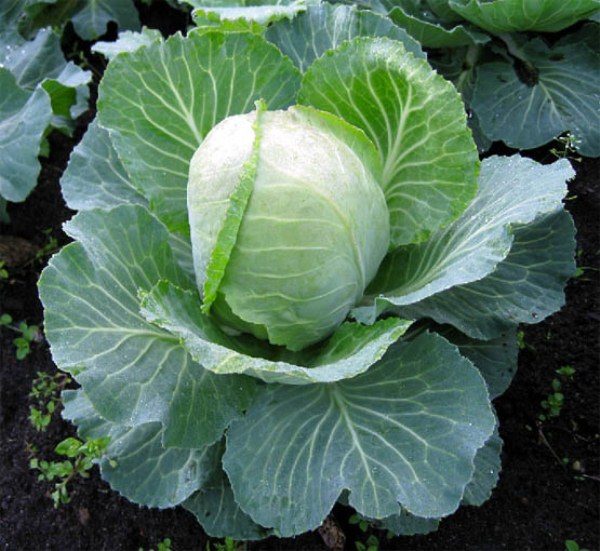
There are simply no negative qualities in a vegetable.
Growing seedlings
Cabbage seedlings should be grown in greenhouse conditions. The quality of the vegetable will depend on the sowing fund, so that the acquisition of seeds should be taken seriously, having thought out for exactly what purpose you plan to grow the crop. From the target destination and will depend on the selection of varieties, sowing time. Wintering is sown in early April, seedlings are formed about fifty days.
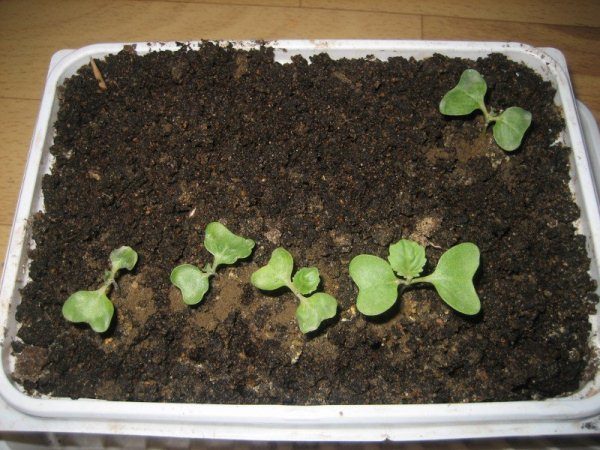
The first shoots appear five days after planting. The temperature regime should be about ten degrees of heat, until the seedlings appear first leaves.
Light day for seedlings should last from twelve to fifteen hours, so it is necessary to organize the lighting up. The soil should be moderately moist, not dry.Periodically it is necessary to carry out loosening. A week after germination, the ground must be shed with a weak manganese solution.
After a week and a half, when the seedlings are strong, they can dive to increase the area for food. Before this, the ground should be shed properly so that the seedling is removed along with the soil clod. Before transferring to a separate container, the spine is shortened by a third. You can do without picking, if from the very beginning to carry out the planting of seeds in separate cups. This will not traumatize the seedlings during its transfer to the beds.
Growth conditions for this variety
Landing site Wintering is prepared in advance. It should be lit all day by the sun. The soil composition should be loamy or clayey. Land plots with high acidity are not suitable for growing cabbage. If the soil is affected by bacteriosis, cabbage cannot be planted on it for eight years. If you grow radishes, turnips, turnips or turnips - cabbage can not be planted on these beds for three years.
How to prepare the soil for cultivation
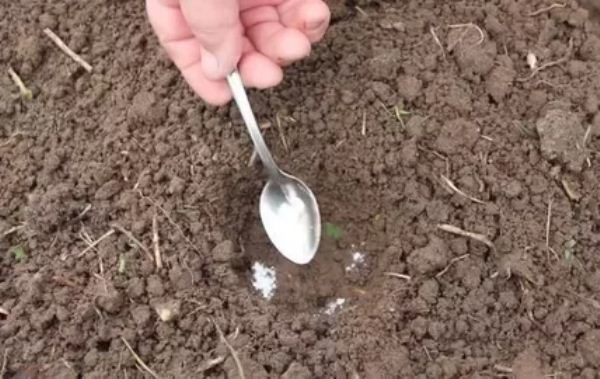
Landing area must be prepared in advance. In the autumn lime is added, in the spring organic matter is added to the garden at the rate of one bucket per square of area. In the hole prepared for planting seedlings, make a couple of spoons of superphosphate, two cups of wood ash, one small spoonful of urea.
How to plant cabbage in open ground
The planting scheme is thirty-five to sixty centimeters. The options for transplanting open beds are as follows. - seedlings should form from four to six leaves, the height of the seedling to reach fifteen to twenty centimeters. As a rule, this period falls on the end of May.
Departure after landing
During growth, one plant needs from one to five liters of water; for adults, this rate increases to two buckets. When watering is very important that the plant was not strongly flooded. Otherwise, the root system dies off completely after twelve hours. After watering the soil must be loosened.
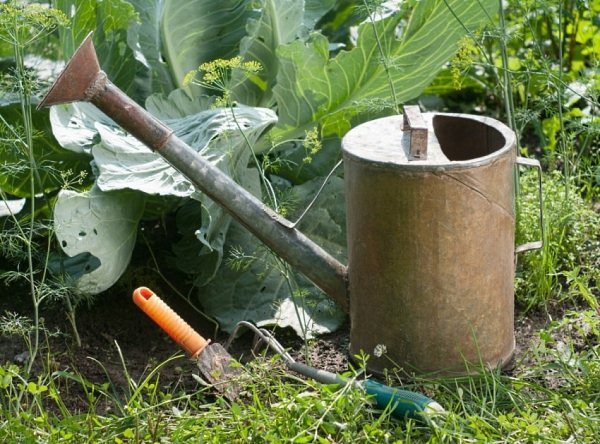
During growth, perform three dressings. Three weeks after disembarking, a liquid mullein is added (1 liter for two buckets of water).After another ten days, chicken manure is put in the amount of one liter per plant. After waiting another ten days, apply liquid mullein or infusion of the litter, spilling on a square meter area from six to eight liters of the composition.
Naturally, it is necessary to loosen the land in the beds, at the same time removing weeds.
Diseases and their prevention
Wintering, like other varieties, may be affected:
- black leg;
- Kilo;
- mucous bacteriosis;
- downy mildew.
It is threatened by a cruciferous flea, and a cabbage fly, snails and slugs, whitefish and aphids.
When dealing with most of these hazards It is recommended to use folk remedies.
Harvesting and storage rules
Cleaning heads should be done in dry weather without causing injury. Pull together with the spine, the covering foliage should be removed to the head itself. Collected cabbages must be removed from the place lit by the sun. It is best to hang them in the shade so that the room is well ventilated.
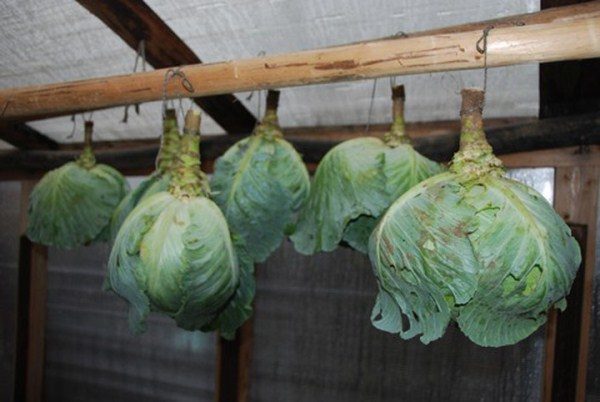
There are several ways to store crops. - spread out on a rack, hang in the basement. Temperature should be around zero degrees.
Some keep the cabbage harvest in small piles, stacking the cabbages in rows and covering with straw.
Conclusion
Wintering is great for long storage. It has excellent transportability. Many gardeners recommend growing it for pickling or salting.
